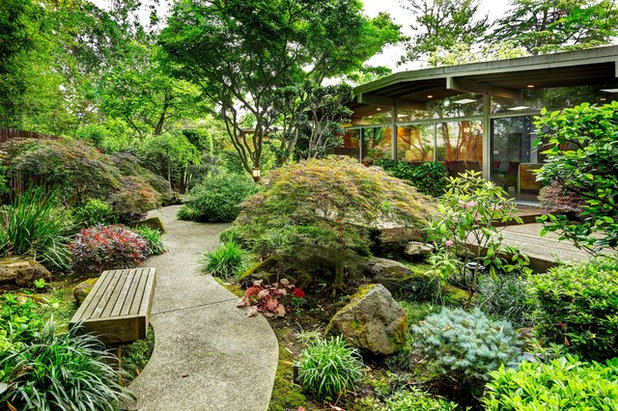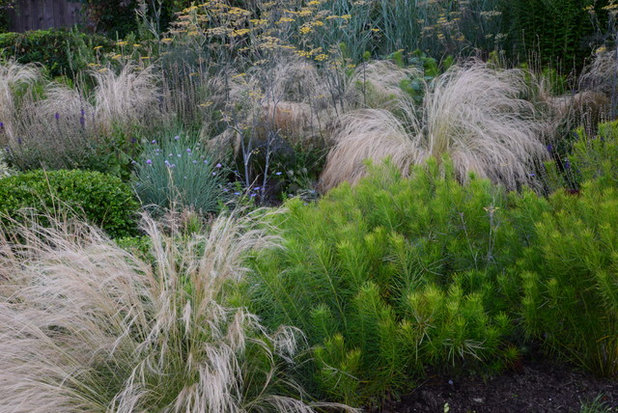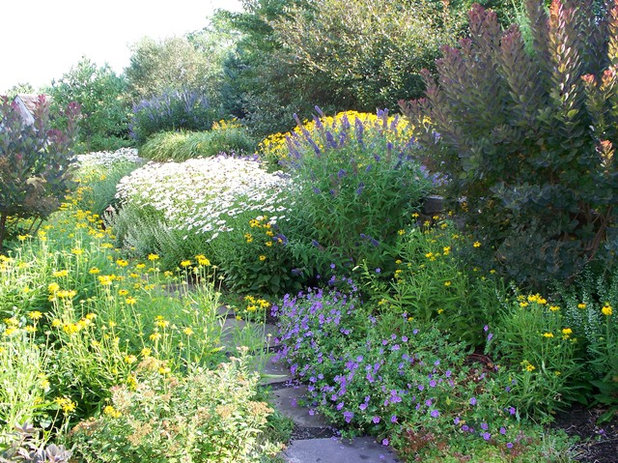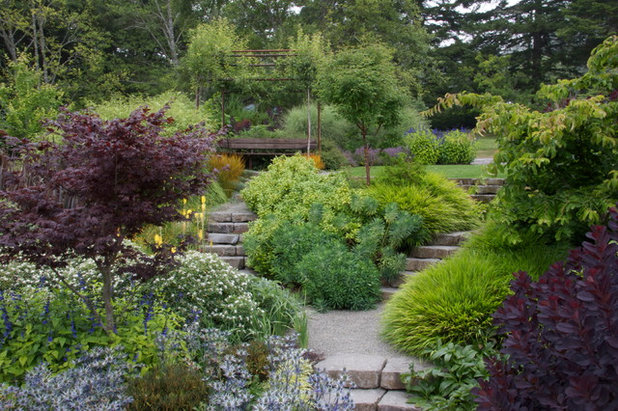I want every garden I see to blow my mind open, throw my senses into overdrive and transport my body to another level of being in a way that only nature can. The point of a garden is for it to be an artistic interpretation of the natural world — it’s art, it’s creative and it’s drawing outside the lines to create tension that induces a metaphysical response in those who walk or drive by the landscape. What am I saying? Let’s rethink how and where we’re planting, and what plants need to thrive.

Unique Techniques
1. Bring shrubs and small trees into the garden, away from the house. Our default landscaping mode is to put trees on building corners, along with shrubs, and place shrubs up against a wall or fence. That’s too bad, because when we invite these woody plants into the garden, surprise and intrigue occur — the garden suddenly becomes elevated sculpturally and creates a more dynamic ecosystem for wildlife. Mix your shrubs and grasses and perennial flowers, have some fun and think more like wild nature.
5 Reasons to Bring Shrubs Into the Flower Garden

CYAN Horticulture
2. Don’t evenly space plants. When you’re out walking in a prairie or woodland or desert, does it look like a marching band at a football game? Why do so many landscapes have plants lined in perfectly spaced, straight rows? Certainly, plant tags, which suggest a set spacing, are partially to blame, but so is the idea that a grid of equally spaced plants will cover the area faster. Sure, the area might be covered faster, but in most landscapes such a formal grid just doesn’t mesh with the building structure, hardscape or vista beyond the garden.
Dot groupings of plants here and there, and not evenly — maybe in a gaggle of five grasses, have two close together, one farther away and two close together again but not as close as the first two. Play with things. Be natural, not dogmatic, with your plants.

Dear Garden Associates, Inc.
4. Leave the soil alone. In vegetable beds, it’s a great idea to amend the soil to suit whatever goodies you’ll be growing, matching soil nutrients to plants. But in most gardens, it’s best to use what you have, matching plants to the native conditions. Plus, tilling soil destroys the structure and a lot of beneficial life. (It’s said there are more life forms in a tablespoon of soil than there are people in the world.)
In addition, avoid putting “good” soil in a planting hole — all that does is encourage the plant to stay put and languish. And you’ll just create a bowl, so rain will drown the plant (this is especially the case with clay soils come spring and fall).

Mosaic Gardens
5. Bring tall and even sprawling plants close to the path. Trust me, they won’t bite, so why not put a 6-foot-tall Joe Pye Weed or coreopsis near a path so people can actually see it, smell it and hear the pollinators? Tall plants don’t always have to go in the back, and short ones don’t have to go in the front. Spice things up — surprise, tickle and tease. Touching plants is a mood enhancer, just like hugging is. And when you’ve got those taller plants knocking into you as the breeze picks up, go ahead and embrace them with a big bear hug — just make sure no one else is looking.





